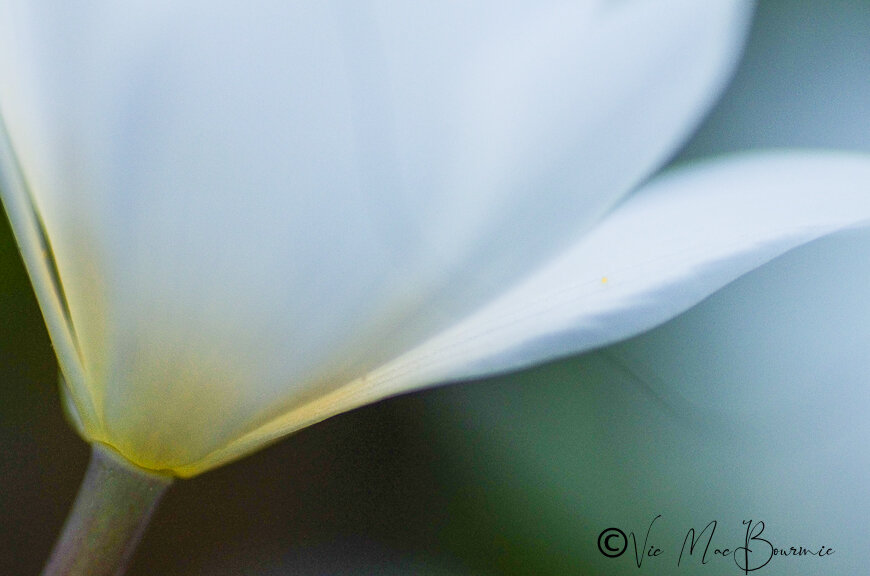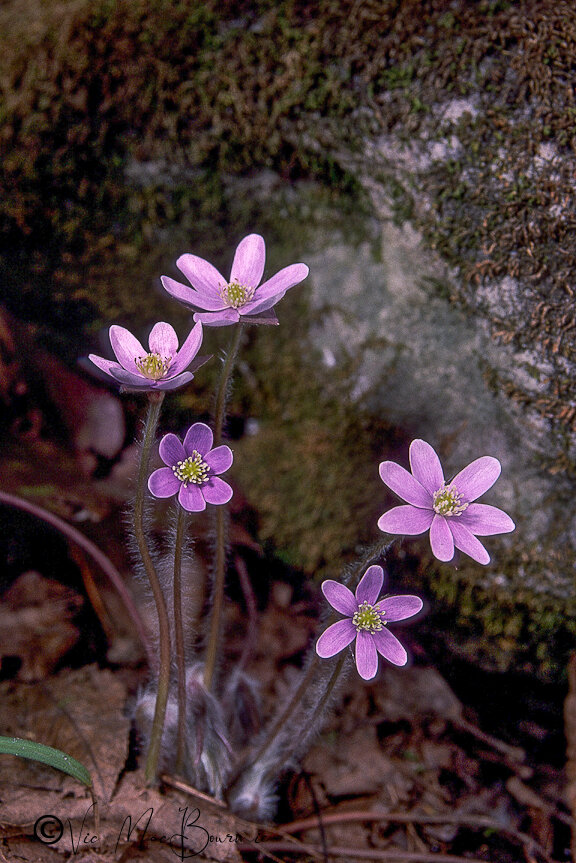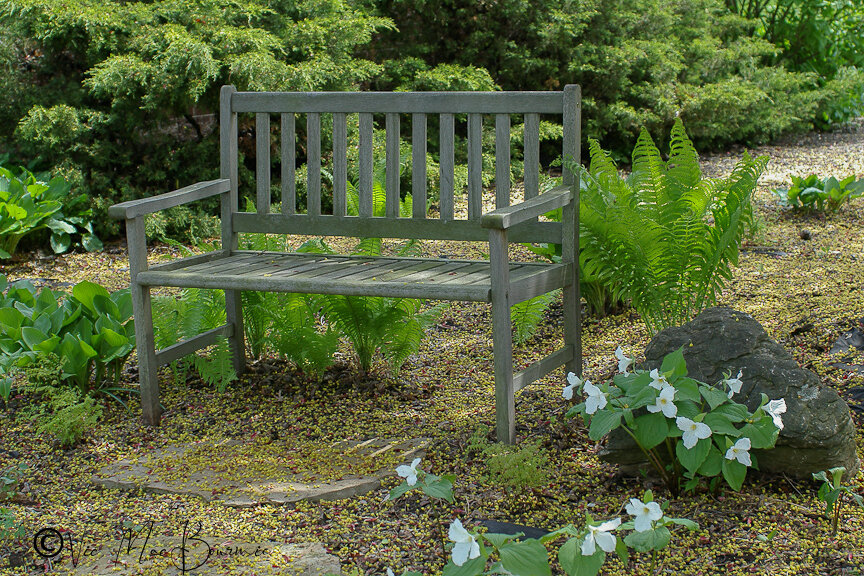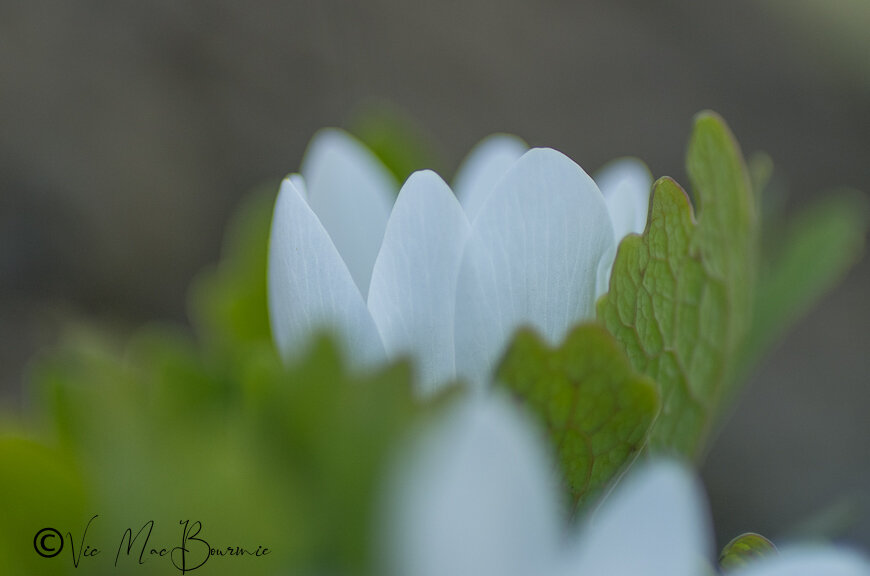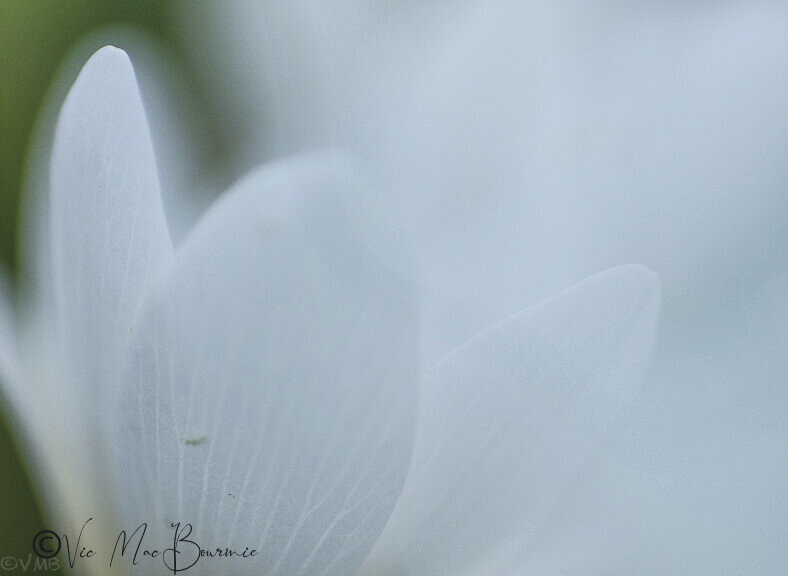Three spring wildflowers for the woodland garden
Cultivating a love for Ephemerals
Spring ephemerals are often the first thing we think about when it comes to a woodland garden.
You know, those flowers that suddenly appear in early spring and quietly disappear almost as quickly as they appeared until re-emerging the following spring. In the meantime, they provide an essential early source of nectar for many of our pollinators and kick off the official woodland gardening season.
The diminutive Hepatica, the well-loved Trillium, and the aptly-named Bloodroot are three easy-to-grow spring wildflowers to plant in your woodland garden. All three will give you an early bloom, with the Hepatica adding lovely little hits of colour combined with its hairy stems and purple flowers.
Let’s take a closer look at all three of these woodland wonders.
(For my article on the importance of native plants, trees and shrubs, go here.)
The delicate nature of this Bloodroot flower and other spring ephemerals light up the woodland garden in early spring before they quietly disappear only to return the following spring.
Hepatica (Hepatica nobilis)
I remember going out into the woods around our home looking for the perfect Hepatica to photograph. My photo friends and I would crawl around the wet forest floor examining the delicate flowers (actually members of the buttercup family) trying to find the perfect specimen. They would emerge in early spring before the trees leafed out and when the ground was still wet from the melting winter snow. They opened only on sunny days and we would have to bring along a small mister to dampen the surrounding leaves and darken them for the photograph.
That just gives you an idea of how early you can expect these wildflowers to bloom.
Although Hepatica are native to Europe, Asia and eastern North America, our hunting grounds were the hardwood forests of southern Ontario. Theses small evergreen plants appeared, often tucked among the limestone rocks and fallen tree trunks in shades of pink, purple, blue or white sepals sitting atop the three green bracts on very hairy stems. In the United States, they are often found growing in rich woodlands from Minnesota to Maine and even as far south as Northern Florida and west to Alabama.
Spring in the woodland. Hepatica clump growing up against moss-covered limestone rock.
Hepatica nobilis is the plant found in Eastern North America, Europe and Japan, but other varieties, namely obtusa and var. acuta can also be found in North America.
There is nothing like a macro shot of a delicate, blue Hepatica with the sun streaming in from behind the flower and lighting up the delicate hairs along the stems of the plant. To get these shots we had to get low, very low. These flowers rise up only a couple of inches from the ground at best and don’t really flower unless they are getting at least some sun. Great specimens were not easy to find. Adding to the difficulty was the fact that we were capturing these images in the days of Kodachrome or Fuji Velvia with ASAs of 25 and 50.
Those days are done. Modern digital cameras open up the possibilities of capturing these wildflowers in very creative ways. And there is no real need to go into the forest to find these flowers when you can just go into your own backyard to experience them.
Hepatica hybrids have been cultivated in Japan going back to the 18th century. There are Youtube videos exploring the Japanese fascination with these flowers. This obsession is not hard to understand considering the delicate nature of the plants and how well they fit in to a Japanese-style garden. The Japanese have long perfected the hybrids with doubled petals in a range of colour patterns.
Although the hybrids can work in a woodland garden if you want a little more showiness, I always try to get the native wildflower or species plant (Hepatica nobilis)
Remember those Hepatica I photographed years ago? They were growing in alkaline limestone-derived soil. These flowers are not overly particular about where exactly they grow and can be found in a range of conditions, from the deep shade of a woodland to a grassland in full sun. They are most happy in a shaded location with rich organic soil and will live for many years. Once established, they will form colourful clumps of flowers that will bloom early in spring alongside even your crocuses. They are happy in both sandy and a clay-rich soil. What Hepatica really need for success is a covering of snow in winter and an evenly moist soil throughout the year.
Gardeners on a budget can grow Hepatica from seed, however be prepared to wait several years for the plant to bloom. Divided plants will also take a few years to recover and thicken up.
The perfect place to sit and enjoy the spring Trilliums in our front garden.
Trilliums (T. grandiflorum)
It’s hard to imagine a woodland without Trilliums. Easily recognized by their three petalled white flowers surrounded by a whorl of three green leaves, these early spring bloomers have long been a favourite of gardeners looking to celebrate spring.
Although there are more than 40 trillium species, with varying colours ranging from white to yellow, maroon and approaching nearly purple, most are familiar with the white trillium (T. grandiflorum).
Trilliums nestled in around a fallen birch branch in this natural woodland scene.
During those same photographic outings with my buddies we would often stop by the “Trillium Trail” at a local provincial park that was literally covered with thousands of Trilliums in all shapes, sizes and interesting variations. It was always an impressive site but in some ways overwhelming to photograph. So many Trilliums, so little time.
If given proper growing conditions, Trilliums are relatively easy to grow and are long-lived in our woodland gardens. Provide them with an organic-rich soil that is well drained but kept moist all summer. The flowers will bloom early before the trees are all leafed out, and become dormant by midsummer.
Trilliums do not transplant well if they are dug up from the forest floor, so always purchase Trilliums from a reputable nursery.
Gardeners on a budget can propagate Trilliums from seed, but expect to wait up to five years before you begin to see blooms. Seeds sown in the garden will not even germinate until the second year. Propagating trilliums by rhizome cuttings or, even better, division when the plant is dormant is probably an easier way to go.
A bloodroot flower tries to emerge from its leaf that wraps around it like a glove in the early spring garden.
Bloodroot (Sanguinaria canadensis)
Every spring I watch for the Bloodroot to emerge in our front woodland garden beneath the Serviceberry tree and one of our Japanese Maples. They are growing beside a large limestone boulder tucked in and among ground covers that hide the emerging plant until just before they bloom. I’m often surprised to suddenly see the lovely white blooms with the sunny yellow center.
My sudden encounters every spring is not a surprise since the Bloodroot flower emerges from the ground on a single stem wrapped up in their own single, large leaf. The white multi-petaled blossom may even begin opening before the leaf has completely unwrapped. The bloom, which can stretch upwards of 12-14 inches high, manages to rise just slightly above the leaf before opening. On a sunny day the white flower with its blood-red stem and roots, opens to reveal its stunning flower only to close up again at night.
A selective focus image of a Bloodroot flower emerging in the spring garden.
Our native bloodroots are members of the poppy family. Like other ephemerals they are only in flower for a fleeting time in spring before they disappear again only to rise up again the following spring.
Bloodroots spread rapidly and can make an excellent ground cover. And here is an interesting fact, seed dispersal is primarily done by ants.
You can expect to find them growing wild in moist woodlands throughout the U.S. and Canada from Eastern Quebec to Manitoba and south to Florida, Alabama and Texas.
For gardeners on a budget, the best method of propagation is by seed. It is best to plant the seeds immediately after you collect them, usually in early to mid-June. It’s also important to ensure the seeds do not dry out. This is a good reason to harvest your own seed rather than using commercially available stock.
More links to my articles on native plants
Why picking native wildflowers is wrong
Serviceberry the perfect native tree for the garden
The Mayapple: Native plant worth exploring
Three spring native wildflowers for the garden
A western source for native plants
Native plants source in Ontario
The Eastern columbine native plant for spring
Three native understory trees for Carolinian zone gardeners
Ecological gardening and native plants
Eastern White Pine is for the birds
Native viburnums are ideal to attract birds
The Carolinian Zone in Canada and the United States
Dogwoods for the woodland wildlife garden
Bringing Nature Home by Douglas Tellamy
A little Love for the Black-Eyed Susan
Native moss in our gardens
This page contains affiliate links. If you purchase a product through one of them, I will receive a commission (at no additional cost to you) I try to only endorse products I have either used, have complete confidence in, or have experience with the manufacturer. Thank you for your support.

